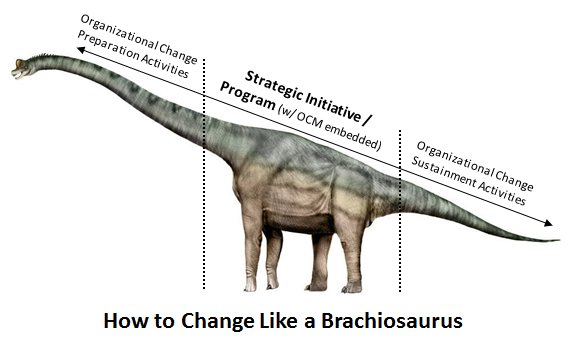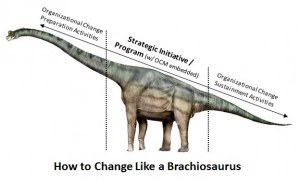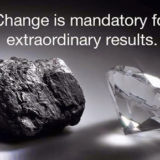
 In their recent research report, 10 Best Practices in Organizational Change for Project Managers (August 29, 2011), Gartner focuses on the fact that project and program managers struggle with coordinating effective, organizational change practices. This struggle is compounded by an increasing rate of structural change from activities such as mergers and reorganizations, which is making change created by projects and programs even more difficult for organizations to assimilate, resulting in “change fatigue.”
In their recent research report, 10 Best Practices in Organizational Change for Project Managers (August 29, 2011), Gartner focuses on the fact that project and program managers struggle with coordinating effective, organizational change practices. This struggle is compounded by an increasing rate of structural change from activities such as mergers and reorganizations, which is making change created by projects and programs even more difficult for organizations to assimilate, resulting in “change fatigue.”
Once again Gartner underscores the importance of project managers engaging organizational change experts early–to assess the magnitude of the change inherent in the program and to infuse organizational change management (OCM) strategies into the project plan.
They make the point that change activities are often needed even before the start of the formal program, and change activities will almost always be required long after the program has concluded. The more significant the change, the longer the duration of the organizational change effort that is required. We think the Brachiosaurus is a good metaphor to illustrate this holistic approach. Don’t neglect the all-important upfront (head) and post-implementation (tail) organizational change work, which is critical to the success of your program. Remember to Change Like a Brachiosaurus!
Gartner notes that although members of the program management office (PMO) are experts in the mechanics of project management, practitioners struggle with the activities associated with organizational change. Oftentimes, organizational change activities fall to the PMO by default, even when they did not have the requisite skills, because no one on the business side understands how to deal with the project’s organizational change implications either.
For many project managers the amount of change happening with the project can become overwhelming and appear to be happening just for the sake of change. This not only makes the project manager’s role difficult, but the resultant change fatigue to the team and the extended stakeholders can result in a decreased rate of project success.
A few suggested best practices for project managers based on the Gartner research:
- Understand the type of change your organization will experience. More change requires a greater need for change techniques that address and understand human motivation. Define the change that your organization will undergo, and align organizational change techniques, such as change management and organizational readiness. Create an organizational change plan that takes into account the specific needs of the various stakeholder groups. Successful change addresses all the stakeholders’ WIIFM (“what’s in it for me?”) concerns and engages all levels of the organization (senior leaders, middle managers, and the frontline employees).
- Integrate organizational change activities into the program and project plans. This can be a separate plan, with the critical milestones listed on the program or project plan. The likelihood of successful change is decreased if the activities are left undefined or not assigned accountability. It is important to define the measurements that will assess if the activities have been successful or pose risk to the overall program or project.
- Budget specifically for organizational change activities. In a previous study, Gartner recommended that companies should allocate an average of 15% of program budget to organizational change management activities. Assume that some of the organizational change activities will need to be done at the beginning of the project (e.g., change readiness assessments and stakeholder engagement sessions), and others will need to be done after the business solutions (e.g., new technologies, revised processes, re-organization, etc.) has been implemented.
- Effective organizational change requires an understanding of what motivates human beings to accept change, as well as under what conditions they are likely to become fearful and “change-resistant.” Make sure individuals with this knowledge are included in the project and program teams. Seek outside help if your enterprise lacks the skills, but plan on having this discipline in-house for long-term success. Project success is increased tenfold by organizations that do a good job in this area. Ignore these steps and suffer the consequences of failed projects.*
*A 2009 IBM survey (see “Making Change Work”) of more than 1,500 companies showed that nearly 80% of projects aimed at achieving business change do not fully meet their objectives. However, companies that IBM has termed “change masters” — those with organizational readiness capabilities in the top 20% — had project success rates of 80%. Contrast this with those in the bottom 20%, which IBM has termed “change novices”: They had project success rates of 8%.










